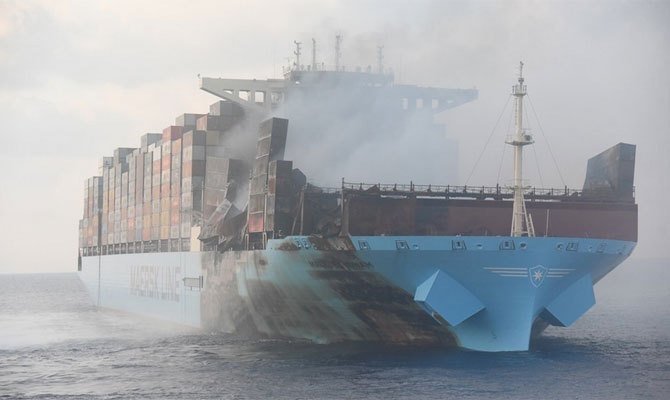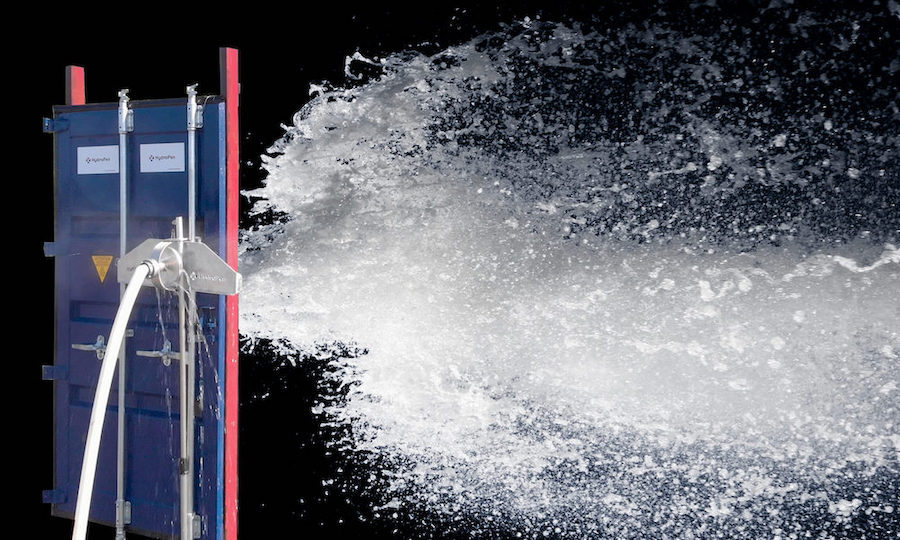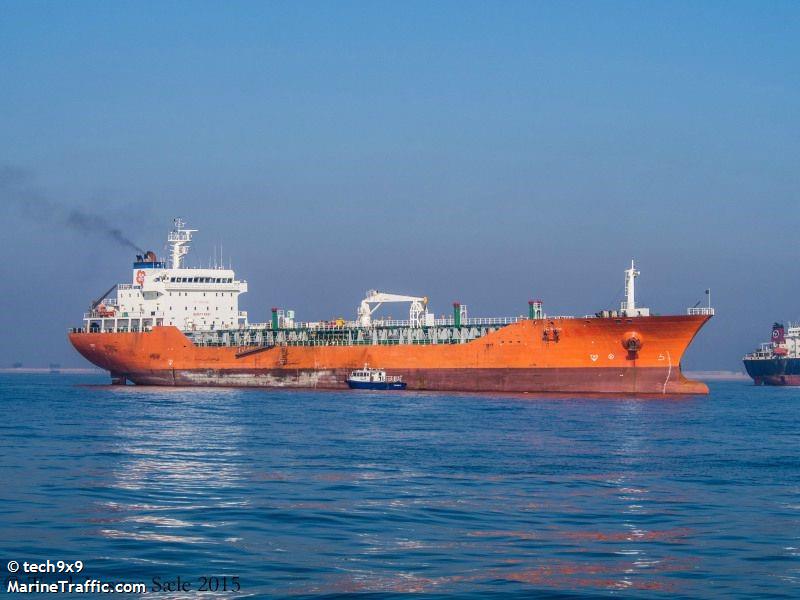Maersk invests in fleet-wide firefighting tech

Chastened by statistics from insurers that suggest a major fire takes place on a boxship every 60 days, Danish carrier Maersk has been taking plenty of action on this issue in recent years.
Maersk, which has suffered a number of fires across its fleet in recent years, including the deadly blaze on the Maersk Honam in 2018 (pictured), has decided to install VIKING’s HydroPen firefighting system across its entire fleet.
The HydroPen system (pictured, right) is designed for direct firefighting in stacked shipping containers. It is driven purely by water pressure through an attached deck fire hose. When water pressure is activated, a turbine drives the HydroPen drilling unit until it penetrates the container door, whereupon the system sprays water into the container to extinguish the fire directly at the source. In the case of a fire at height in the container stack, the HydroPen system can be deployed using a telescopic device. Beyond water, the system is compatible with foam or CO2.

“From having been involved in the early development phases to fully implementing the HydroPen system, A.P. Moller – Maersk has once again shown its uncompromising commitment to go beyond industry standards, to protect both its crews and its clients cargo and assets” said VIKING’s Anders Nørgaard Lauridsen, senior country director, Baltic Sea.
Maersk has taken many measures to combat fires onboard since the Maersk Honam blaze four years ago, which killed five crewmembers. Much time has been spent studying and changing guidelines for the carriage of dangerous cargoes onboard. It has also implemented random container checks to stamp out misdeclared cargoes.
ICHCA International, the cargo handling operatives association, calculated back in 2019 that of the 60m packed containers moved each year, 10% or 6m are declared as dangerous goods. Information from published government inspections – which are invariably biased towards declared dangerous goods loads – suggests that 20% of these are poorly packed or incorrectly identified. This translates into 1.3m potentially unstable dangerous goods containers travelling around the world each year.

 in 2018 (pictured), has decided to install VIKING’s HydroPen firefighting system across its entire fleet.
in 2018 (pictured), has decided to install VIKING’s HydroPen firefighting system across its entire fleet.
Useful information and worth replicating in all container ships. Thus will create confidence and goodwill amongst the seafaring community. I salute the Maersk team for such a noble gesture towards the seafarers.